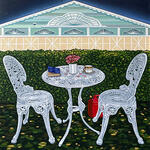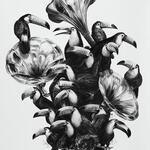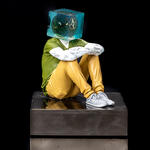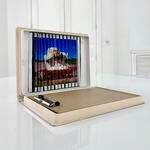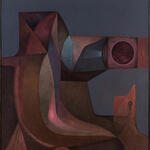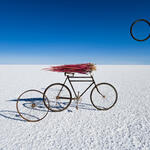Lucas Bragagnini
Bio
Lucas Bragagnini
Born in Rosario, Argentina, in 1984, where he lives and works.
In terms of education, in 2009, he completed his studies in Advanced Photography at the technical level. He began his artistic training in the studio-workshop of Norberto Puzzolo, focusing on aesthetics and photography, as well as art and photography clinics, from 2009 to 2014. In 2019, he attended artwork clinics and mentorship sessions with Mauro Guzmán.
He participated in the Taller Compartido training program with Yuyo Guardiol, which included workshops and clinics led by Daniel Juglar, Nancy Rojas, David Nahon, Eduardo Basualdo, Florencia Battiti, and Paola Vega. From 2011 to 2014, he also served as a Teaching assistant for the “Practica Profesional" course with Norberto Puzzolo at I.S.E.T. No. 18.
Among his recognitions, in 2024, he was invited to participate in the TRABUCCO Drawing Prize by the National Academy of Fine Arts. He won 3rd place in the National Arts Salon Palais de Glace in the Drawing category in 2021 and was a finalist for the Itaú Foundation Visual Arts Prize that same year. In 2020, he received the Production Incentive Award from the Gabinete Museo Castagnino + Macro. He held a solo exhibition, “Meridiano 4267”, curated by Gastón Herrera, at Subsuelo gallery in 2019.
Currently, his work is part of various private collections and institutions in Argentina.
Statement
I began my artistic training with technical studies in photography. From there, I developed an ongoing interest in connecting photographic imagery with various pictorial disciplines and image systems, exploring mixed pictorial and scenic resources that incorporate scenography, geometry, and color studies.
In my work, I develop projects that establish a dialogue between photography and drawing, exploring their interaction to create hybrid images. In this sense, I work as if engaging in an alchemical process where I become the camera, and I construct reality as though I were photographing it.
As Humberto Maturana states: "Nothing exists outside our minds, only experience, and experience is given and conditioned by the interpretation provided by our senses." This concept is central to my work. It inspires me to propose a game in the relationship between images—a fragmented narrative that prioritizes juxtaposition and the layering of one image over another.
My aim is not to confuse what is real and what is represented but to recognize, as in theater, that something can be both real and unreal at the same time. This perspective invites viewers to reflect on how images operate in the visual world, their capacity for meaning, and their expressive potential.
Ultimately, in my works, I strive to convey the sensation of the photographic instant—that moment when one aims, frames, and clicks the shutter.












